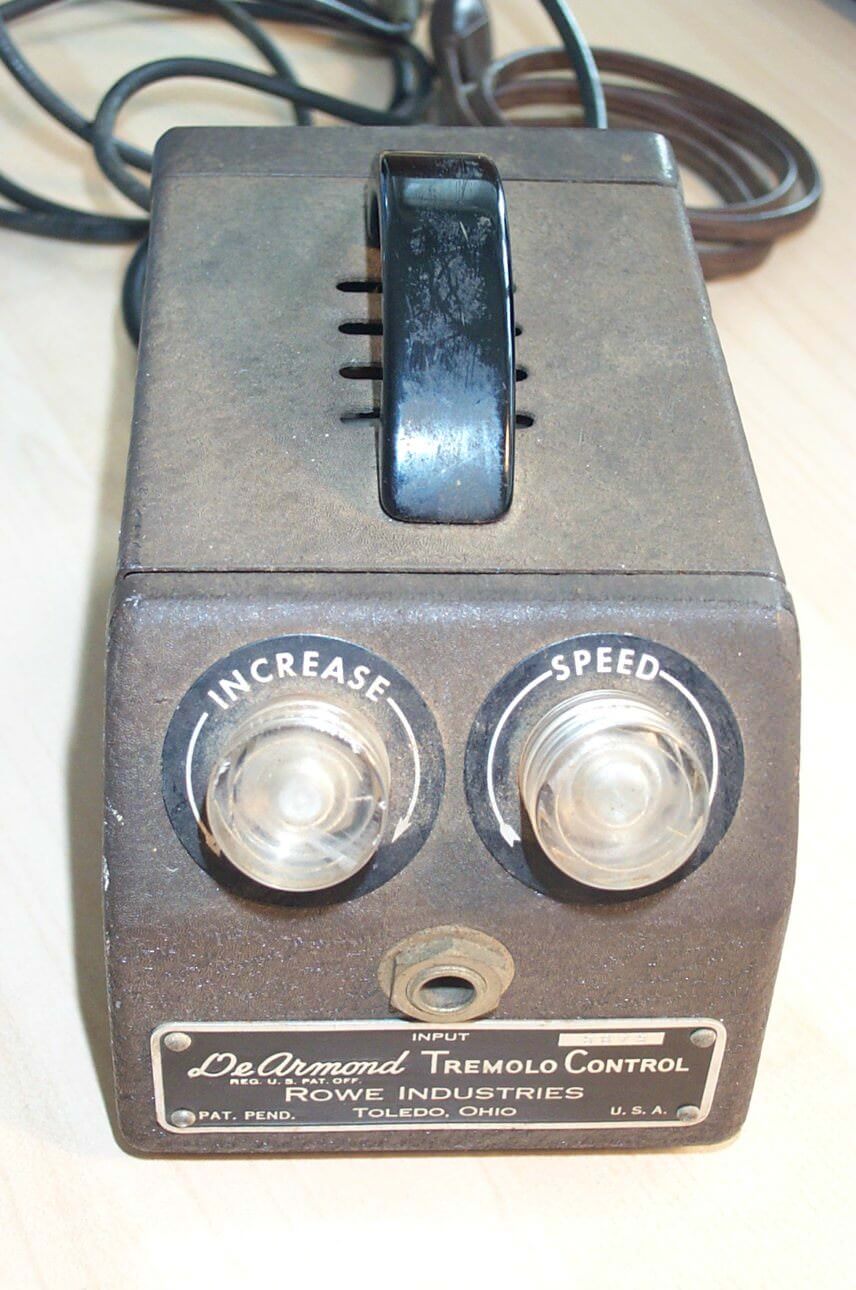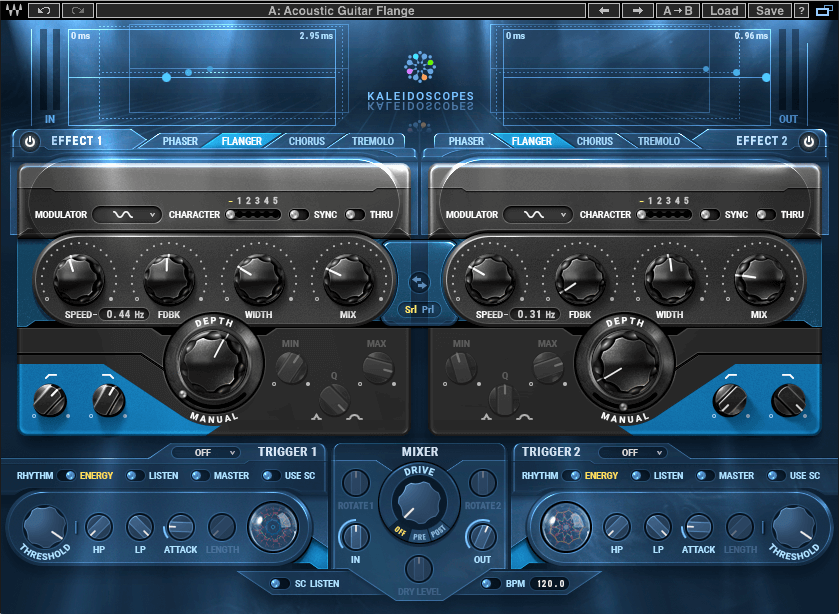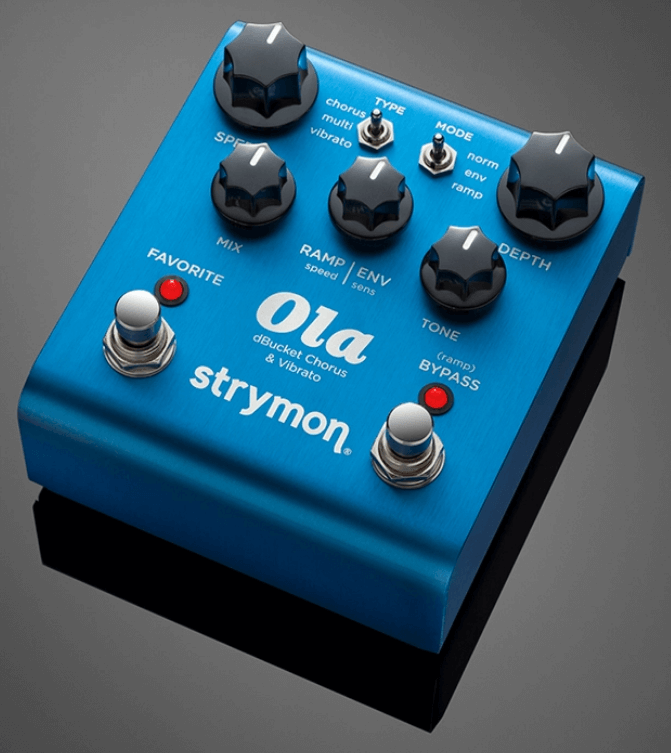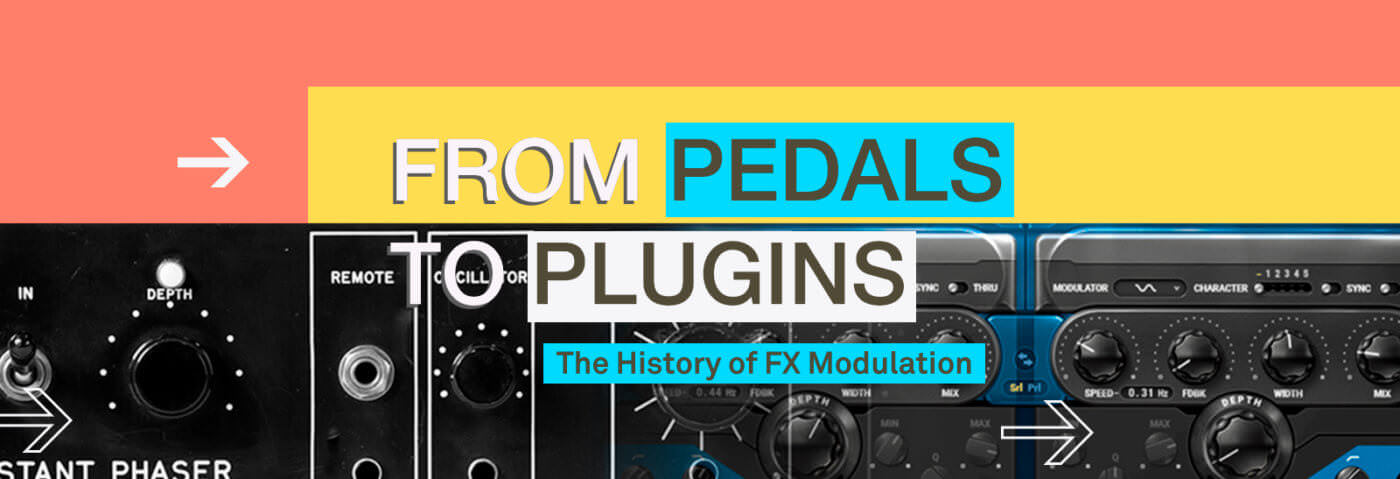The history of modulation effects is long and fascinating, stretching from the electromechanical devices of the 1940s up to our ultra-modern digital plugins.
We tend to think of music creation very differently now than how it was traditionally done. Originally, you pointed a microphone at a group of musicians and tried to capture as realistic a recording of that performance as possible in real-time. Along the way though, forward-minded visionaries began to experiment with ways to alter sound. No longer were we obsessed with realism. Thanks to the growing field of modulation effects, we could create sounds that had never been heard before.
Tremolo, phasing, flanging, chorus—these effects add a kind of magic to music production. Giorgio Moroder used flanging all over the percussion on most of his classic disco-era productions while Nile Rodgers’ guitar is fairly slathered with chorusing in Daft Punk’s ‘Get Lucky‘. Underground dance music is full of examples of modulation as well. Imagine ‘Stell’ by Blawan with no flanging on the hi-hats. Or how about Bicep’s remix of ‘Opal’ by For Tet without all that glorious flanging and phasing? You can’t. These additions are indispensable and become part of the song’s music DNA.
Let’s take a trip through the history of modulation effects and see how they have evolved from simple volume modulation to the ultra-complex plugins of today.
Tremolo
The history of modulation began in the 1940s with tremolo. It was first popularized by R&B acts such as Bo Diddley and the Staples Singers in the 1950s and had something of a resurgence in the psychedelic 1960s when Tommy James and the Shondells sang through one on ‘Crimson And Clover’.

The DeArmond 601 Tremolo Control is credited as the first effects pedal. It brought amplitude modulation-or tremolo—to the world. To achieve this, the DeArmond 601 had two controls, Increase (what we think of as depth) and Speed. It was an electromechanical device, with a small vial of electrolytic liquid shaken by a drive spindle. An electrical signal passed through the liquid, and the sloshing caused the effect. By the 1950s, tremolo had found its way into guitar amps like the Fender Tremolux and Fender Vibrolux Reverb.
Phasing
Recording innovations continued throughout the 1960s, with increased tape track count leading to overdubbing and less of a reliance on capturing single-take performances. Thanks to the efforts of bands like The Beatles and the work of engineers, tape-based studio trickery like flanging and double-tracking became mainstream enough that manufacturers began to explore ways of recreating them in electronic form.

Eventide were big drivers of change in recorded music in the 1970s. Their Instant Phaser Model PS101, released in 1972 when they were still known as Eventide Clockworks, brought electronic phasing to the world and is credited with being the first rackmount effects unit. Thanks to its bank of eight analogue all-pass filters, it could be used to create modulation effects ranging from artificial stereo width to the familiar rising and falling comb filter whoosh known as phasing. Led Zeppelin famously pushed John Bonham’s drums through one on ‘Kashmir’.
Pedal manufacturers soon worked on their own versions of the effect. One of the best known is the Phase 90 from effects manufacturer MXR. Released in 1974 and heard on Pink Floyd’s ‘Shine On You Crazy Diamond’, the stompbox had one control, speed. It was followed up by the Phase 100, which added an intensity dial, in 1977. Keith Richards used one on the Rolling Stones’ ‘Shattered’ in 1978.
Imagine 'Stell' by Blawan with no flanging on the hi-hats. Or how about Bicep's remix of 'Opal' by Four Tet without all that glorious flanging and phasing? You can't
Flanging and Chorus
While phasing was a popular modulation effect and appeared on countless records in the 1970s, it didn’t quite nail the sound of the technique known as tape flanging. By playing two copies of the same song or sound simultaneously on two tape decks, engineers could create a metallic, oscillating effect. The lab coats at Eventide went back to the drawing board and in 1976 they unveiled the Eventide Clockworks Instant Flanger.

Much like the Instant Phaser, the Instant Flanger was a rackmount effects unit. It had controls for feedback amount and oscillator rate as well as an envelope follower. As with the previous machine, it was a hit. Japanese electronic music pioneer Tomita used one all over his Kosmos album.
At its heart, flanging is a delay effect, although one that makes use of very short delays. Another modulation effect that appeared around the same time that is also based on delays is chorusing. The Boss CE-1 Chorus Ensemble, released by the Roland subsidiary in 1976, was the first chorus pedal. As with a chorus of singers, the effect doubles up a sound and makes it sound wider. It also employs subtle pitch shifting to expand the width of the original signal. Chorusing became extremely popular in the late 1970s and 1980s thanks to bands like The Police and The Cure. In fact, you could argue that it is the defining sound of the ‘80s (along with the Yamaha DX7, of course).
Modern Modulation
Since the 1980s, the evolution of modulation has slowed down, while the refinement of modulation has continued apace. Formerly analogue effects like chorusing entered the digital realm thanks to advancements in DSP in the 1980s. Eventide was at the forefront of high-end digital modulation with its multi-effects processor H3000 in 1986. Companies like Yamaha and Alesis brought digital modulation to the masses. The latter’s Quadraverb series was a must-have for any home studio in the late ’80s and early ’90s.

With the advent of VSTs in the 1990s and advances in computing power, modulation effects like tremolo, phasing, flanging and chorusing also moved into computers. Modern plugins often combine multiple effects into single units and add additional controls not imagined by their original developers.
Modulation effects developers include Soundtoys (check out Tremolator and PhaseMistress), MeldaProduction (the MFreeFXBundle is jam-packed with quality modulation plugins) and Blue Cat Audio (the Freeware Plug-ins Pack II is another great source for modulation).

Another such modern modulation plugin is Waves Kaleidoscopes, which features two effects units each capable of cascading multiple effects together, as well as intelligent triggering and sidechaining. Being prolific, Waves also has a large back catalogue of modulation plugins to get stuck into, including Enigma and MetaFlanger while the Trigger section of Kaleidoscopes uses dynamics on the sidechain to affect the effect, according to what you play into it. In short, this lets you play interactively with the effect and for it to become an instrument with which to interact.

There’s also been something of a stompbox renaissance in recent years, with almost every flavour of modulation now available in various permutations and combinations. Boss has continued to release modulation effects in pedal form. There are also a number of boutique companies involved, such as Strymon, whose pedals are especially popular with hardware synthesizer users. Give a listen to Ola for chorusing and Orbit for flanging.

The history of modulation has come a long way since DeArmond put a jar of liquid in a box and asked musicians to plug their guitars into it. And yet the spirit behind that invention remains as true then as it does today: creating new ways to manipulate sound and make better music.
